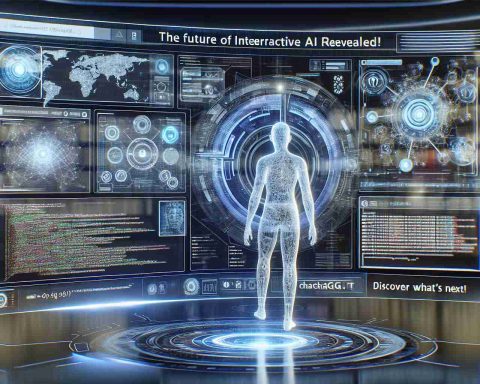Inga Strümke, a notable figure in AI research at the Norwegian University of Science and Technology, emphasizes the importance of educating the public about artificial intelligence. In her recent documentary appearance, she illuminates the potential dual uses of AI in both warfare and healthcare, highlighting the need for awareness and responsibility in its application.
Strümke’s bestselling book, “Machines That Think,” aims to demystify AI. She expresses a desire to alleviate the irrational fears surrounding AI by framing it as a technology that poses significant challenges, particularly to democratic processes. Her view is that rather than being a mystical force, AI should be approached with critical understanding to mitigate its risks and make ethical decisions.
She identifies a cultural fear of AI stemming from science fiction narratives, suggesting that historical myths have influenced our perception of intelligent machines. The portrayal of machines gaining autonomy has perpetuated apprehension, but Strümke argues that the primary concern lies not within the technology itself but within human behavior and decisions regarding its use.
Amid recent calls from experts for a pause in AI development due to existential fears, Strümke urges a focus on the already evident dangers of manipulative digital systems. She warns that, like other powerful industries, AI has the potential to exacerbate societal issues unless harnessed responsibly. The journey towards understanding AI is essential, as it provides a pathway to navigate its impact on our future.
The Dual Nature of AI: A Scholar’s Perspective on Fear and Understanding
The conversation around artificial intelligence (AI) continues to grow in urgency and complexity. While figures like Inga Strümke draw attention to its dual-use implications in fields such as warfare and healthcare, other aspects of AI also warrant discussion. This article delves deeper into the dual nature of AI, addressing key challenges, controversies, and the broader societal impacts that shape our understanding of this transformative technology.
What are the most pressing ethical concerns surrounding AI?
One of the most critical ethical concerns is the potential for bias within AI algorithms. Many AI systems are trained on datasets that reflect historical biases, leading to discriminatory outcomes in situations like hiring, lending, and law enforcement. Additionally, issues of privacy and surveillance arise as AI-powered technologies are implemented in various domains, raising questions about consent and the misuse of personal data.
What role does legislation play in AI development?
Currently, legislation surrounding AI development is sporadic and often lagging behind technological advancements. While some countries are beginning to formulate guidelines and regulations, there remains a significant global disparity in how AI is governed. The absence of comprehensive legal frameworks poses challenges in standardizing ethical practices and ensuring accountability among developers and corporations alike.
What advantages does AI bring to society?
AI has the potential to revolutionize numerous industries, significantly increasing efficiency and productivity. In healthcare, for instance, AI can assist in diagnostics by analyzing medical images more accurately and quickly than human doctors. In agriculture, AI-driven technologies can optimize yields by predicting weather patterns and monitoring crop health. Furthermore, AI can enhance customer experiences through personalized recommendations, leading to increased satisfaction and loyalty.
What are the disadvantages and risks associated with AI?
Despite its advantages, AI also presents a range of disadvantages, including job displacement as automation replaces certain tasks previously performed by humans. Moreover, the quality of decisions made by AI is highly dependent on the data fed into it, which can lead to the spread of misinformation if not properly managed. The risk of creating autonomous weapons further underscores the dual nature of AI, as it raises ethical questions about the implications of delegating life-and-death decisions to machines.
How can we foster a deeper understanding of AI among the public?
Education and awareness-raising are paramount in fostering a more nuanced understanding of AI. Programs aimed at demystifying the technology, such as public forums, workshops, and digital literacy campaigns, can empower individuals to engage critically with AI’s societal impacts. It is essential to discuss AI in various contexts—be it through ethical debates, technological literacy initiatives, or interdisciplinary studies—so that its implications are widely understood and responsibly addressed.
What is the future landscape of AI, and where do we go from here?
Looking ahead, the landscape of AI is likely to be shaped by ongoing technological advancements and a growing recognition of the need for ethical governance. As society grapples with the implications of AI, stakeholders must come together—policymakers, technologists, ethicists, and the public—to create frameworks that prioritize human welfare and promote equitable outcomes.
In conclusion, understanding the dual nature of AI—its potential benefits and risks—requires a concerted effort from all sectors of society. By addressing these concerns collaboratively, we can harness the power of AI responsibly and sustain meaningful progress.
For more on artificial intelligence and its broader implications, visit MIT Technology Review.

















